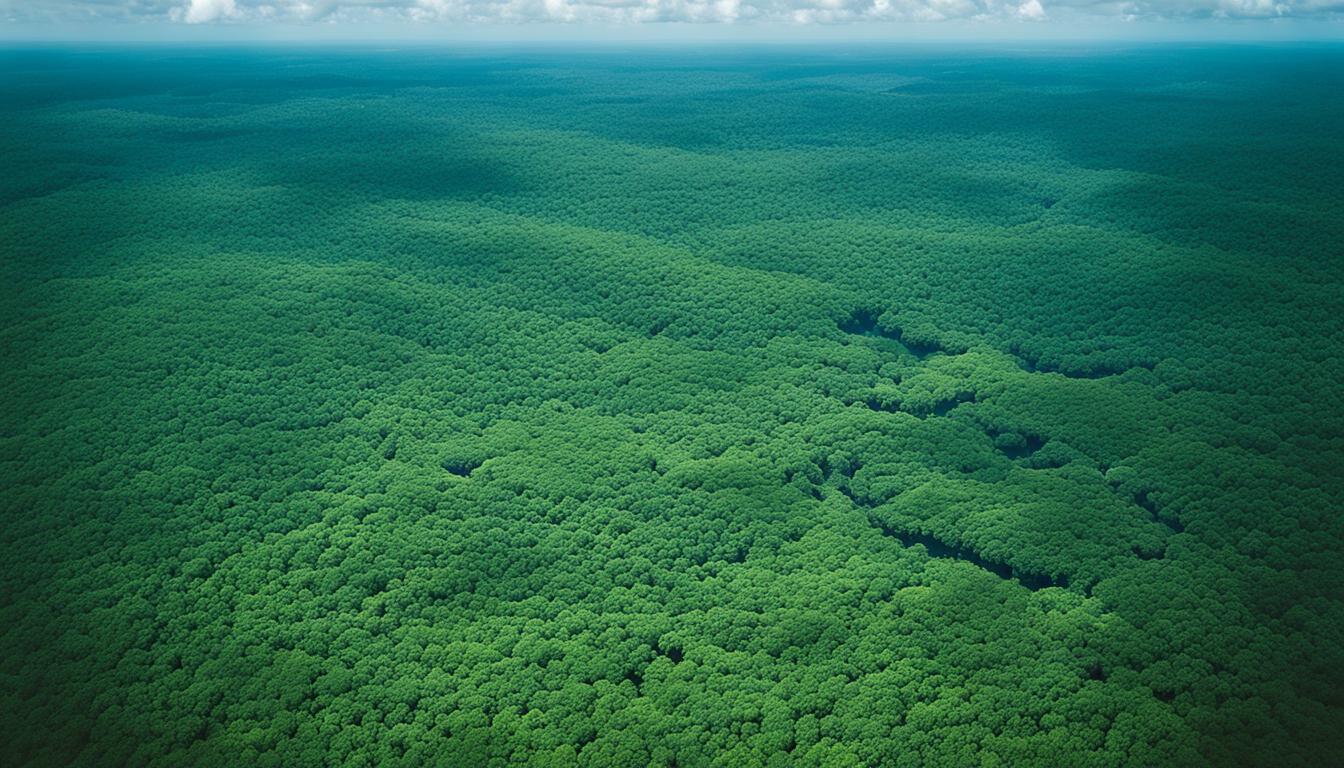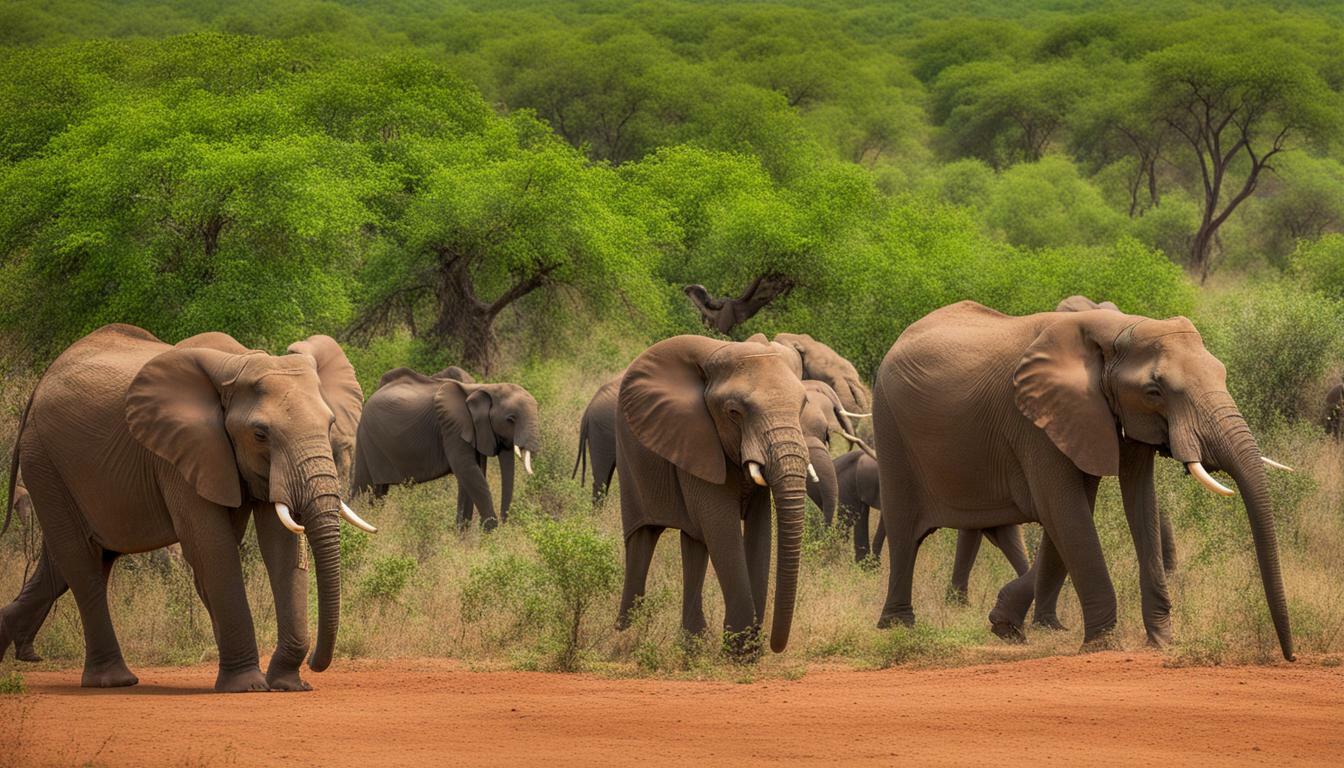Haiti Sacred Natural Sites and Biodiversity
Did you know that Haiti, with its rich natural ecosystem, is home to numerous sacred landscapes that hold immense cultural significance? These sites, protected by indigenous communities, play a crucial role in biodiversity conservation and environmental protection in the country.
In Haiti, marine biologist Jean Wiener, founder of the Foundation for the Protection of Marine Biodiversity (FoProBiM), is working tirelessly to preserve and revitalize the country’s coastal and marine ecosystems. Through sustainable intervention and community involvement, Wiener and FoProBiM have undertaken initiatives such as planting mangrove trees, restoring coral reefs, and establishing Marine Protected Areas.
This work not only protects Haiti’s natural resources, but also safeguards the cultural heritage of the local communities. By integrating traditional knowledge with scientific approaches, Wiener and his team promote sustainable development while ensuring the long-term survival of Haiti’s sacred natural sites and biodiversity.
Key Takeaways:
- Haiti is home to sacred natural sites that hold cultural significance and contribute to biodiversity conservation.
- Marine biologist Jean Wiener and the Foundation for the Protection of Marine Biodiversity are leading efforts to preserve Haiti’s coastal and marine ecosystems.
- Through sustainable intervention and community involvement, initiatives such as tree planting and coral reef restoration are implemented.
- The integration of traditional knowledge and scientific approaches is crucial for achieving sustainable development and biodiversity conservation in Haiti.
- Protecting Haiti’s sacred natural sites and biodiversity requires collaboration among scientific institutions, NGOs, and local communities.
The Threat of Climate Change
Climate change poses a significant threat to Haiti, according to local marine biologist Jean Wiener. The country’s coastal environments are particularly vulnerable to the impacts of rising sea levels and other climate-related changes. These issues are expected to have major consequences for Haiti’s natural ecosystems and the communities that depend on them.
Addressing climate change and its effects on Haiti’s sacred natural sites and biodiversity is imperative for their long-term survival. It requires proactive measures to mitigate and adapt to the changing climate, ensuring the protection of coastal environments and the valuable resources they provide.
The Rising Sea Levels Threaten Haiti’s Coastal Environments
Rising sea levels are a significant concern for Haiti’s coastal environments. As the earth’s climate warms, melting glaciers and thermal expansion contribute to higher sea levels. This poses a direct threat to low-lying coastal areas, including Haiti’s shorelines.
Coastal erosion, saltwater intrusion, and increased flooding are some of the major issues associated with rising sea levels. These changes can lead to the loss of vital habitats, such as mangrove forests, and disrupt the delicate balance of coastal ecosystems. Additionally, they compromise the stability and sustainability of communities that rely on these environments for their livelihoods.
The Impact on Natural Ecosystems and Biodiversity
Climate change also has significant implications for Haiti’s natural ecosystems and biodiversity. The alteration of temperature patterns, shifts in rainfall, and changes in habitat suitability can disrupt the delicate balance of ecosystems, leading to the loss of plant and animal species.
Coastal environments support a diverse range of species, including coral reefs, mangroves, and seagrass beds. These habitats are crucial for marine biodiversity and provide essential resources for local communities. However, the destruction caused by climate change threatens their existence, putting both the ecosystems and the communities at risk.
Adapting to Climate Change
Addressing the threats posed by climate change requires a multi-faceted approach. It involves both mitigation measures to reduce greenhouse gas emissions and adaptation strategies to cope with the changes that are already occurring.
“We need to invest in sustainable practices and infrastructure that can resist the impacts of climate change. This includes coastal protection measures, reforestation efforts, and the promotion of sustainable livelihoods,” says marine biologist Jean Wiener.
Efforts such as restoring and expanding mangrove forests, implementing sustainable fishing practices, and developing climate-resilient infrastructure can help communities adapt to a changing climate and preserve the valuable coastal ecosystems.
The Foundation for the Protection of Marine Biodiversity
In 1992, marine biologist Jean Wiener founded the Foundation for the Protection of Marine Biodiversity (FoProBiM), which is Haiti’s first NGO dedicated to preserving the country’s coastal and marine ecosystems. FoProBiM takes a holistic approach to enhance the lives of communities and promote sustainable living. Their efforts include planting mangrove trees, restoring coral reefs, and establishing Marine Protected Areas. Through sustainable intervention and community involvement, FoProBiM aims to protect Haiti’s natural resources and promote biodiversity conservation.
The Foundation for the Protection of Marine Biodiversity (FoProBiM) is Haiti’s first and only NGO focused on safeguarding the country’s coastal and marine ecosystems. Founded in 1992 by marine biologist Jean Wiener, FoProBiM is dedicated to the preservation of Haiti’s diverse coastal and marine environments. Emphasizing a holistic approach, FoProBiM strives to create a sustainable future by engaging local communities in their conservation efforts.
“Protecting marine biodiversity is not just about preserving the environment; it’s about enhancing the lives of communities and promoting sustainability for future generations.”
Leveraging their expertise, FoProBiM’s initiatives encompass various interventions aimed at conserving Haiti’s coastal and marine ecosystems. They actively engage in the planting of mangrove trees, which serve as natural barriers against erosion and provide crucial habitats for numerous marine species. Additionally, FoProBiM is instrumental in restoring coral reefs, which are vital for the health and resilience of marine ecosystems. By establishing Marine Protected Areas, FoProBiM ensures the long-term protection of critical habitats and fosters the sustainable use of marine resources.
Moreover, FoProBiM recognizes the importance of community involvement in achieving its conservation goals. The organization actively collaborates with local communities, empowering them to take ownership of their natural resources and participate in sustainable practices. By organizing educational programs and capacity-building initiatives, FoProBiM promotes environmental awareness and provides communities with the necessary tools to protect Haiti’s coastal and marine ecosystems.
Preserving Haiti’s Natural Resources
FoProBiM’s commitment to biodiversity conservation extends beyond its immediate environmental impact. By protecting Haiti’s natural resources, the foundation contributes to the country’s overall sustainable development. The coastal and marine ecosystems of Haiti support vital economic activities, such as fishing and tourism. FoProBiM’s sustainable interventions help preserve these livelihoods and ensure their long-term viability.
Through its holistic and community-centered approach, the Foundation for the Protection of Marine Biodiversity (FoProBiM) strives to safeguard Haiti’s coastal and marine ecosystems for future generations. By planting mangrove trees, restoring coral reefs, and establishing Marine Protected Areas, FoProBiM fosters sustainable practices that balance the needs of communities with the preservation of natural resources. Their work serves as a beacon of hope and a model for effective biodiversity conservation.
Balancing Tradition and Sustainable Living
In Haiti, the reliance on natural resources for survival has led to unsustainable practices, such as the cutting down of mangrove trees for charcoal. To address this challenge, marine biologist Jean Wiener, alongside the Foundation for the Protection of Marine Biodiversity (FoProBiM), is involving communities in conservation efforts that promote sustainable living. One such initiative is beekeeping, which provides alternative livelihoods to loggers and fishermen while preserving the natural world.
By finding a balance between traditional practices and sustainable living, Wiener and FoProBiM aim to heal the relationship between people and the environment. This approach recognizes the importance of cultural heritage and the beneficial role it plays in environmental conservation. Integrating traditional knowledge with modern sustainable practices promotes the long-term sustainability of Haiti’s natural world.
“Combining traditional wisdom with scientific understanding, we can create a future where biodiversity thrives and communities prosper.”
Alternative Livelihood Programs
To combat unsustainable practices, alternative livelihood programs have been implemented by FoProBiM in Haiti. These programs provide communities with sustainable economic opportunities that do not deplete natural resources. One notable initiative is beekeeping, which not only offers a viable income source but also contributes to pollinator conservation.
Beekeeping provides a sustainable alternative to logging and fishing, addressing the root causes of environmental degradation. By engaging local communities in the production of honey and other bee-related products, the program helps reduce dependency on destructive practices and fosters a sense of stewardship towards the environment.
The integration of traditional knowledge and sustainable practices is key to achieving economic development while preserving the cultural heritage and natural resources of Haiti. Through these initiatives, Jean Wiener and FoProBiM demonstrate that a harmonious balance between tradition and sustainable living is achievable for a brighter and more sustainable future.
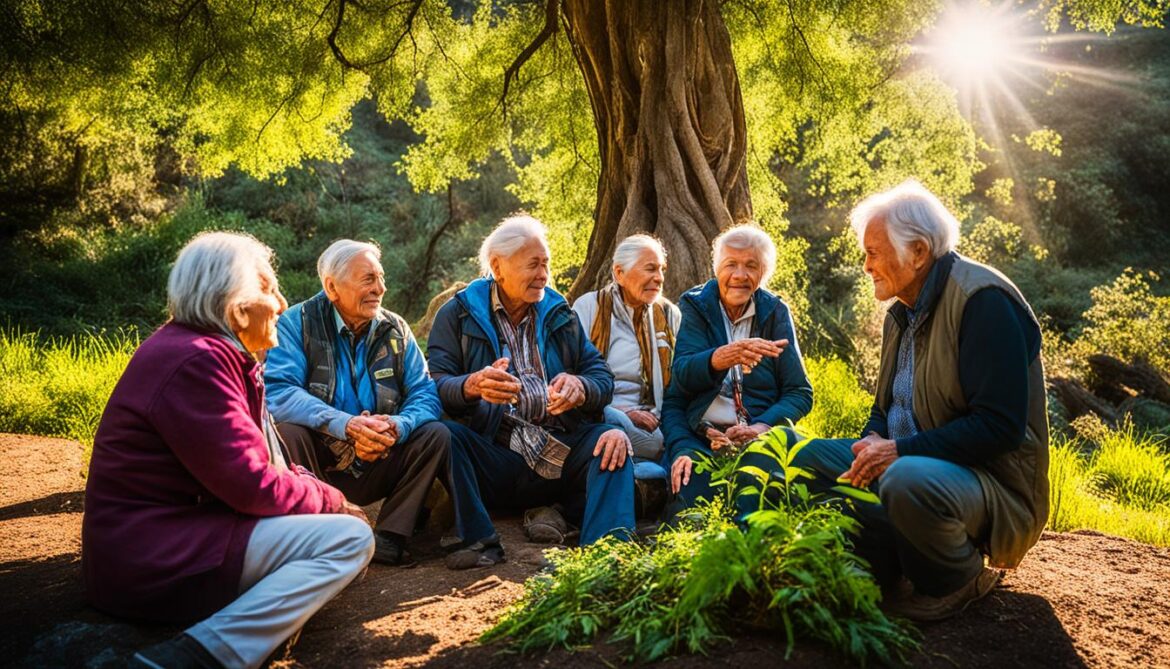
Indigenous Communities and Cultural Heritage
Indigenous communities are invaluable custodians of Haiti’s sacred natural sites and biodiversity. They possess a wealth of traditional knowledge that encompasses not only the intricate ecosystems but also the rich cultural heritage of the country. By actively involving these communities in conservation efforts, we can ensure the preservation of their cultural heritage and traditional practices, all while promoting the vital cause of environmental protection.
Indigenous communities play a vital role in the conservation of sacred landscapes and the protection of biodiversity in Haiti. Their deep-rooted connection to the land and their profound understanding of the natural world allow them to offer unique insights and perspectives on sustainable development.
The integration of traditional knowledge with scientific methodologies is essential to achieving effective biodiversity conservation and driving sustainable development in Haiti. By combining indigenous wisdom with modern practices, we can unlock innovative solutions that harmonize the needs of both nature and culture.
“Harnessing the synergies between traditional knowledge and scientific approaches allows us to tap into the collective wisdom of the past and the advancements of the present, enabling us to create a harmonious and sustainable future,” says environmental researcher Dr. Maria Sanchez.
Indigenous communities possess an intimate understanding of their natural surroundings, gained through centuries of living in harmony with the environment. Their traditional knowledge encompasses sustainable agricultural practices, medicinal plant remedies, and holistic approaches to resource management.
Bridging the Gap: Collaboration between Indigenous Communities and Conservation Organizations
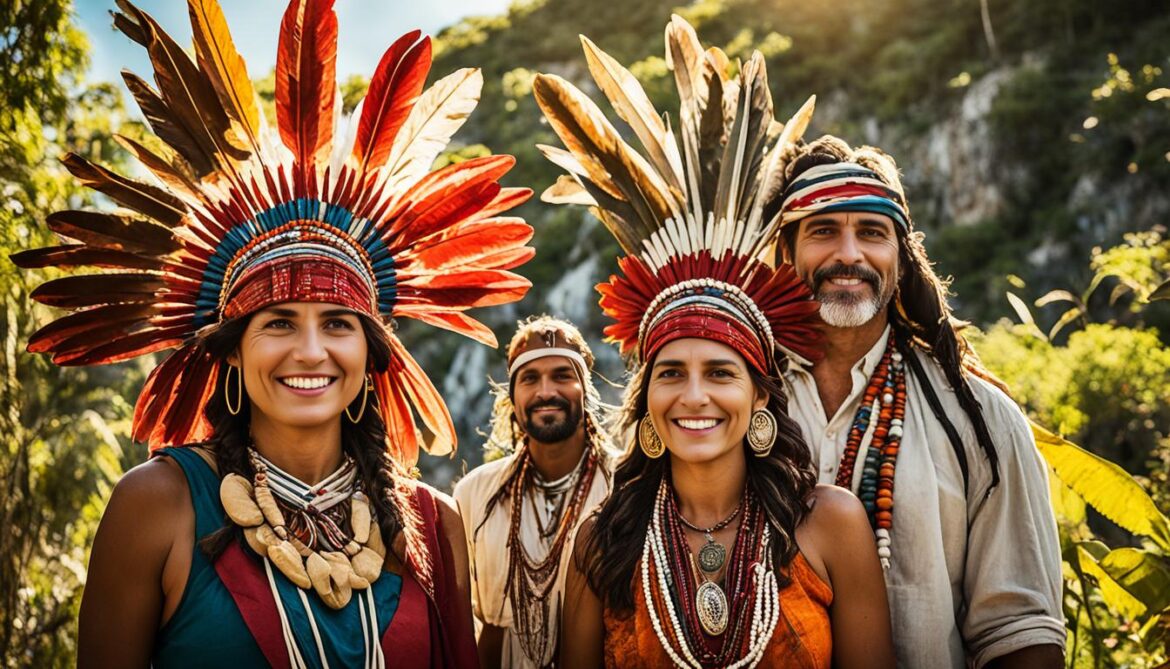
The partnership between indigenous communities and conservation organizations is essential for effective conservation initiatives in Haiti. By merging traditional wisdom with scientific expertise, these collaborations can create a powerful force for change.
An example of successful collaboration is the joint effort of the Fondation pour la Protection de la Nature et de l’Environnement (FPNE) and the local Anacaona Women’s Cooperative in the conservation of Haiti’s sacred sites. Together, they have implemented sustainable practices that honor cultural heritage while safeguarding biodiversity.
| Benefits of Collaboration with Indigenous Communities | Examples |
|---|---|
| Preservation of cultural heritage | Revitalization of traditional rituals and ceremonies |
| Integration of traditional ecological knowledge | Implementation of sustainable resource management practices |
| Enhanced conservation outcomes |
|
Through collaboration, indigenous communities and conservation organizations create a synergy that not only benefits biodiversity conservation but also strengthens cultural preservation.
Dr. Sanchez emphasizes the significance of this collaborative approach: “Working hand in hand with indigenous communities ensures that environmental protection efforts take into account their unique perspectives and values, leading to more holistic and sustainable outcomes.”
By honoring and respecting the cultural heritage embedded within sacred landscapes, we can forge a path towards a future where humans and nature thrive together in harmony.
The Role of Sacred Natural Sites
Sacred natural sites play a crucial role in biodiversity conservation and environmental protection. These sites, revered by indigenous communities, hold immense cultural significance and exemplify the deep connection between nature and spirituality. Recognizing the importance of these sacred sites and integrating them into conservation efforts is key to preserving the natural resources of countries like Haiti while respecting the cultural heritage of its inhabitants.
The cultural significance of sacred natural sites lies in their historical and spiritual associations. These sites often hold traditional knowledge, passed down through generations, about the delicate balance of ecosystems and the sustainable use of natural resources. The unique understanding and practices of indigenous communities contribute to the preservation of biodiversity and the promotion of sustainable development.
“The protection and management of sacred natural sites are crucial in maintaining the balance between human development and ecological sustainability.” – Jean Wiener
By incorporating sacred natural sites into conservation strategies, countries can leverage the cultural and spiritual values attached to these places. This approach fosters a sense of stewardship among local communities and encourages their active participation in environmental protection efforts. Including indigenous knowledge in biodiversity conservation not only enhances the scientific understanding of ecosystems but also ensures the preservation of cultural practices and traditions.
The holistic preservation of sacred natural sites involves not only safeguarding the physical environment but also protecting the cultural and spiritual practices associated with these places. It is a testament to the coexistence of humans and nature, allowing for sustainable development that respects both environmental and cultural values.

The Benefits of Integrating Sacred Natural Sites:
- Biodiversity conservation: Sacred natural sites provide refuge for a rich diversity of plant and animal species, acting as sanctuaries that foster ecological resilience.
- Environmental protection: These sites contribute to the preservation of natural resources, mitigating the impacts of climate change and habitat loss.
- Cultural significance: The recognition and preservation of sacred sites uphold the cultural heritage and values of indigenous communities.
- Sustainable development: Integrating sacred natural sites into conservation efforts ensures that development is aligned with the principles of ecological sustainability and cultural preservation.
Sacred natural sites are a testament to the interrelationship between humans and the natural world. Their protection and management provide a foundation for effective biodiversity conservation and sustainable development. By embracing the cultural significance of these sites, countries like Haiti can achieve a harmonious balance between human development and ecological well-being.
Challenges and Solutions in Conservation
Conservation efforts in Haiti face various challenges, including poverty, limited resources, and the need for immediate survival. These conservation challenges pose significant barriers to the preservation of Haiti’s sacred natural sites and biodiversity. However, initiatives like the Foundation for the Protection of Marine Biodiversity (FoProBiM) and the active involvement of indigenous communities offer solutions that can help overcome these obstacles.
Addressing the root causes of environmental degradation is fundamental to promoting sustainable development in Haiti. By tackling poverty and providing alternative livelihoods, it is possible to alleviate pressure on natural resources and reduce destructive activities, such as illegal logging or overfishing. Sustainable development initiatives that prioritize the well-being of local communities contribute to both poverty alleviation and biodiversity preservation.
Collaboration plays a pivotal role in tackling conservation challenges in Haiti. By fostering partnerships between scientific institutions, non-governmental organizations (NGOs), and local communities, it becomes possible to leverage diverse expertise and resources. Scientific institutions offer invaluable insights into effective conservation strategies, while NGOs provide on-the-ground support and community engagement. Involving local communities in decision-making processes empowers them to actively participate in conservation efforts, ensuring long-term success.
“Conservation is a shared responsibility that requires the collective efforts of scientists, NGOs, and local communities.”
Through collaborative efforts, conservation projects can access funding, knowledge, and necessary resources. This collaboration enables the implementation of comprehensive and sustainable conservation plans that consider the needs and aspirations of local communities. By fostering a sense of ownership and cultivating partnerships, Haiti can achieve significant milestones in biodiversity preservation and sustainable development.
Moreover, education and awareness play a critical role in addressing conservation challenges. By raising awareness about the value of biodiversity and the importance of sustainable living, communities can become active stewards of their natural environment. Environmental education programs that integrate traditional knowledge and cultural heritage contribute to the preservation of Haiti’s sacred natural sites while fostering a deeper connection between people and their environment.
The Role of Sustainable Development Goals
The United Nations’ Sustainable Development Goals (SDGs) provide a framework for addressing conservation challenges holistically. SDG 14, which focuses on life below water, emphasizes the need for the preservation and sustainable use of marine resources. Initiatives like FoProBiM align with SDG 14, promoting marine biodiversity conservation and sustainable fishing practices.
Furthermore, the interconnectedness of the SDGs ensures that efforts to achieve goals such as poverty alleviation (SDG 1), quality education (SDG 4), and climate action (SDG 13) can contribute to biodiversity preservation in Haiti. By integrating conservation objectives into broader sustainable development agendas, cross-cutting solutions can be developed, leading to more effective and inclusive conservation strategies.
Recommended Actions for Conservation
To address the conservation challenges and promote effective biodiversity preservation in Haiti, the following actions are recommended:
- Invest in sustainable development initiatives that prioritize the well-being of local communities.
- Foster collaboration between scientific institutions, NGOs, and local communities to leverage diverse expertise and resources.
- Ensure the active involvement of indigenous communities in decision-making processes and conservation efforts.
- Develop and implement comprehensive conservation plans that consider the needs and aspirations of local communities.
- Raise awareness about the value of biodiversity and the importance of sustainable living through education and outreach programs.
By embracing these actions, Haiti can overcome conservation challenges and pave the way for a more sustainable future, where biodiversity preservation and human well-being go hand in hand.
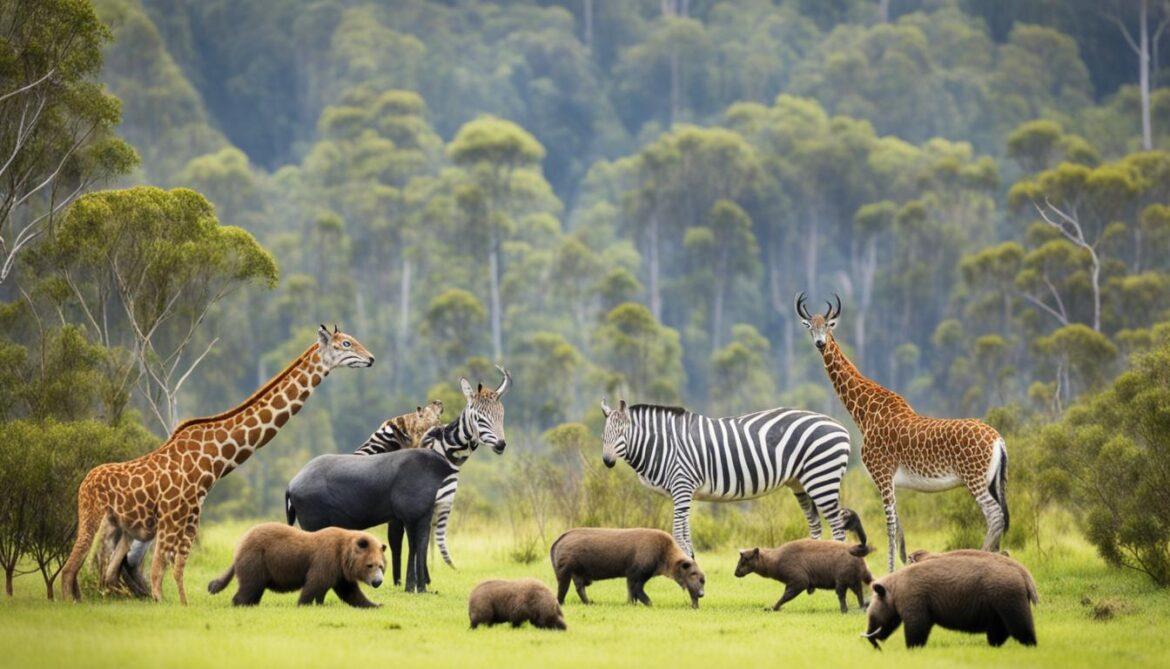
Lessons from Indigenous Peoples
Indigenous communities, such as the Yanesha in the Amazon and the Tibetans in the Himalayas, possess invaluable traditional knowledge and practices that can greatly contribute to biodiversity conservation and cultural preservation. These communities have adapted to the changing environmental conditions and have long recognized the importance of utilizing plant biodiversity for their livelihoods. It is essential that we learn from their experiences and integrate their traditional knowledge with scientific approaches to develop effective strategies for conservation and climate change adaptation.
The perspectives and practices of indigenous peoples should be respected and incorporated into conservation efforts worldwide. Their deep connection with nature and profound understanding of the interdependence between humans and the natural world provide invaluable insights for sustainable development. By embracing these lessons, we can enhance our conservation strategies and ensure the long-term preservation of biodiversity and cultural heritage.
“The indigenous communities have a profound understanding of our natural world. Their knowledge, oral traditions, and practices offer us valuable lessons in preserving biodiversity and adapting to climate change.” – Jean Wiener
Integrating Traditional Knowledge and Scientific Approaches
The integration of traditional knowledge and scientific approaches is key to achieving effective conservation strategies and climate change adaptation. Indigenous peoples’ knowledge of local ecosystems and their dynamics can provide unique insights into conservation practices. By combining this knowledge with scientific research and innovation, we can develop context-specific solutions that account for both ecological and cultural considerations.
For example, the Yanesha people in the Amazon have developed sustainable agriculturalsystems that promote biodiversity and resilience in the face of environmental challenges. Their traditional practices, such as selective breeding of crops and agroforestry techniques, contribute to the conservation of local plant species and enhance the adaptability of agricultural systems.
The Importance of Cultural Preservation
Preserving the cultural heritage of indigenous communities is intrinsically linked to biodiversity conservation. Indigenous practices, rituals, and traditional knowledge are deeply rooted in a profound understanding of the natural world and its dynamics. By safeguarding their cultural heritage, we are also preserving their unique knowledge and practices that have contributed to the sustainable management of ecosystems for generations.
Moreover, the intergenerational transmission of traditional knowledge ensures its continuity and relevance in adapting to climate change. Recognizing the importance of cultural preservation not only respects the rights and identities of indigenous peoples but also enriches the global conservation efforts by incorporating diverse perspectives and approaches.
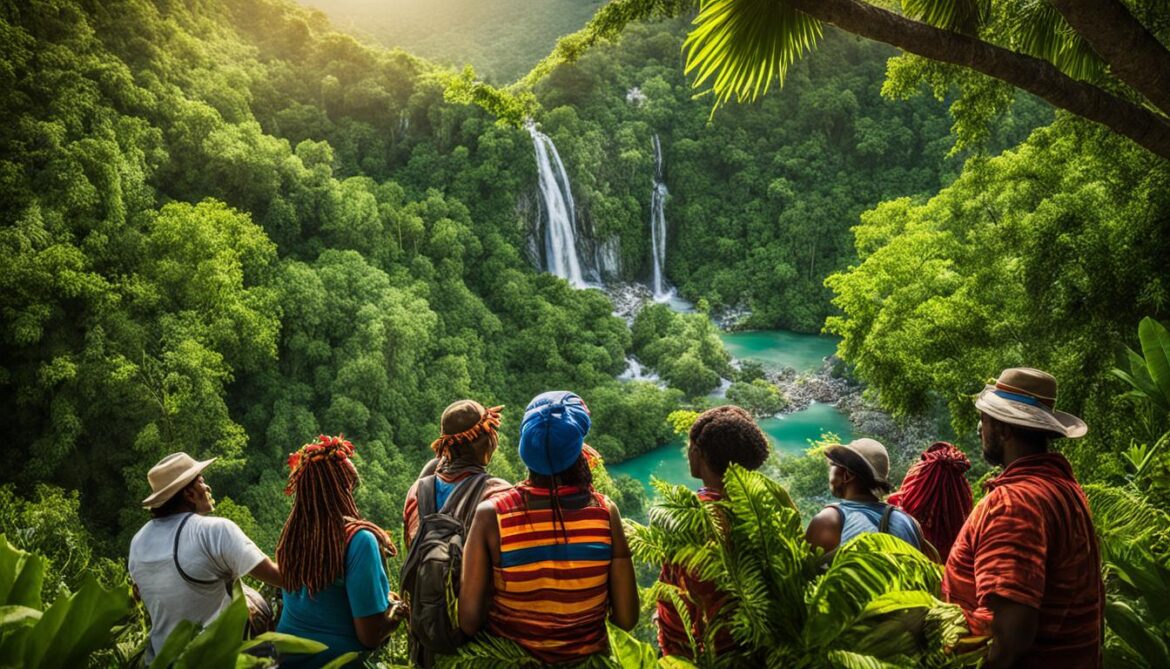
Indigenous peoples’ experiences and practices serve as a reminder that effective conservation strategies require the collaboration and inclusion of diverse stakeholders. By embracing their lessons and integrating traditional knowledge with scientific approaches, we can nurture a more harmonious relationship between humans and the environment, ensuring the preservation of biodiversity and cultural heritage for future generations.
Protecting Biodiversity in Challenging Environments
The Yanesha in the Amazon and the Tibetans in the Himalayas inhabit challenging environments that boast unique biodiversity. However, these regions face significant threats due to climate change and its impacts. Nevertheless, these communities have demonstrated remarkable resilience and innovation in protecting biodiversity by utilizing traditional knowledge and adapting their practices.
One notable adaptation strategy employed by these communities is the selective breeding of plants. By carefully cultivating and propagating specific plant species, they ensure the preservation of unique genetic traits that are essential for biodiversity conservation. Furthermore, the intentional diversification of landscapes within these challenging environments plays a crucial role in supporting various species and enhancing ecosystem resilience.
“Our cultural heritage and the natural world are interconnected. We have learned to work with nature and adapt our practices to protect the biodiversity that sustains us,” emphasizes Tashi, a Tibetan farmer.
These remarkable communities serve as role models for biodiversity conservation in challenging environments. Their practices showcase the importance of ensuring the survival of diverse ecosystems despite external pressures. By learning from these adaptation strategies, we can develop effective conservation measures that focus on resilience, innovation, and the integration of traditional knowledge.
Lessons Learned in Biodiversity Conservation
The experiences of the Yanesha and the Tibetans offer valuable insights into biodiversity protection in challenging environments. By studying their practices, we can acquire a deeper understanding of the intricate relationship between human communities and the natural world. These lessons can guide our efforts to mitigate the impacts of climate change on biodiversity and develop effective adaptation strategies.
- The diversity of plant species is crucial for ecosystem resilience in challenging environments.
- Selective breeding of plants helps preserve unique genetic traits and ensure the long-term survival of species.
- The intentional diversification of landscapes supports various flora and fauna, enhancing ecological stability.
- Resilience and innovation are key to safeguarding biodiversity in the face of climate change.

“The biodiversity in these challenging environments is a treasure, and it is our duty to protect it for future generations,” stresses Laura, a Yanesha community leader.
By implementing these lessons and adopting a holistic approach to biodiversity protection, we can create a sustainable future for both human communities and the natural world. The preservation of biodiversity in challenging environments is not only a testament to the adaptability of indigenous cultures but also a testament to the potential for coexistence between humans and nature.
| Biodiversity Protection Strategies in Challenging Environments | Benefits |
|---|---|
| Selective breeding of plants | Promotes genetic diversity and species resilience |
| Intentional diversification of landscapes | Enhances ecosystem stability and supports diverse flora and fauna |
| Integration of traditional knowledge | Enriches conservation strategies and promotes cultural preservation |
| Sustainable farming practices | Protects soil health, minimizes environmental impact, and ensures food security |
The integration of traditional knowledge, the implementation of sustainable farming practices, and the commitment to biodiversity protection provide hope for the preservation of challenging environments around the world. By valuing and learning from the experiences of the Yanesha, the Tibetans, and other indigenous communities, we can build a future where both human communities and the natural world thrive together.
The Importance of Agrobiodiversity
Agrobiodiversity plays a vital role in traditional agricultural practices of indigenous communities such as the Yanesha and the Tibetans. These communities cultivate a diverse range of crops in their home gardens and swidden fields, creating sustainable and resilient farming systems.
Indigenous agriculture emphasizes the preservation of biodiversity and reduces the risk of crop failure due to pests, diseases, or extreme weather events. By growing a variety of crops, these communities ensure food security and maintain a balanced ecosystem.
The world can learn valuable lessons from these indigenous practices and integrate agrobiodiversity into modern farming systems. Recognizing the value of diverse crops can enhance the resilience and sustainability of agricultural practices worldwide.
By incorporating traditional knowledge and practices into modern agriculture, we can promote biodiversity conservation and sustainable farming methods. This integration not only benefits the environment but also supports the livelihoods of farmers and contributes to food security.
Benefits of Agrobiodiversity in Traditional Agriculture
Agrobiodiversity in traditional agriculture offers several advantages:
- Pest and disease resistance: Growing a variety of crops reduces the risk of widespread damage caused by pests and diseases. Different crops attract various organisms that can act as natural pest control, minimizing the need for chemical interventions.
- Climate resilience: Diverse crops have varying tolerances to different climatic conditions. This diversity helps farmers adapt to changing weather patterns, ensuring a more stable food supply even in the face of climate change.
- Soil health: Different plants have unique nutrient requirements and can enhance soil fertility. The rotation of crops and the use of leguminous plants in traditional agricultural systems contribute to soil conservation and reduce the reliance on synthetic fertilizers.
“Agrobiodiversity in traditional agriculture promotes resilience and sustainability, providing solutions to challenges faced by modern farming systems.” – Jean Wiener, marine biologist and environmental activist
The Role of Indigenous Practices in Sustainable Farming
Indigenous practices offer valuable insights into sustainable farming methods:
- Seed preservation: Indigenous communities have long practiced seed saving and exchange, preserving valuable crop varieties adapted to local conditions. This practice maintains agricultural diversity and prevents the loss of traditional crop varieties.
- Agroforestry: Integrating trees with crops creates a multi-layered system that maximizes land use, provides shade, and contributes to soil conservation. Agroforestry enhances biodiversity and mitigates the effects of climate change.
- Traditional knowledge: Indigenous communities possess deep knowledge of local ecosystems, climate patterns, and crop management. By incorporating this traditional knowledge into modern farming systems, we can boost ecological sustainability and improve agricultural productivity.
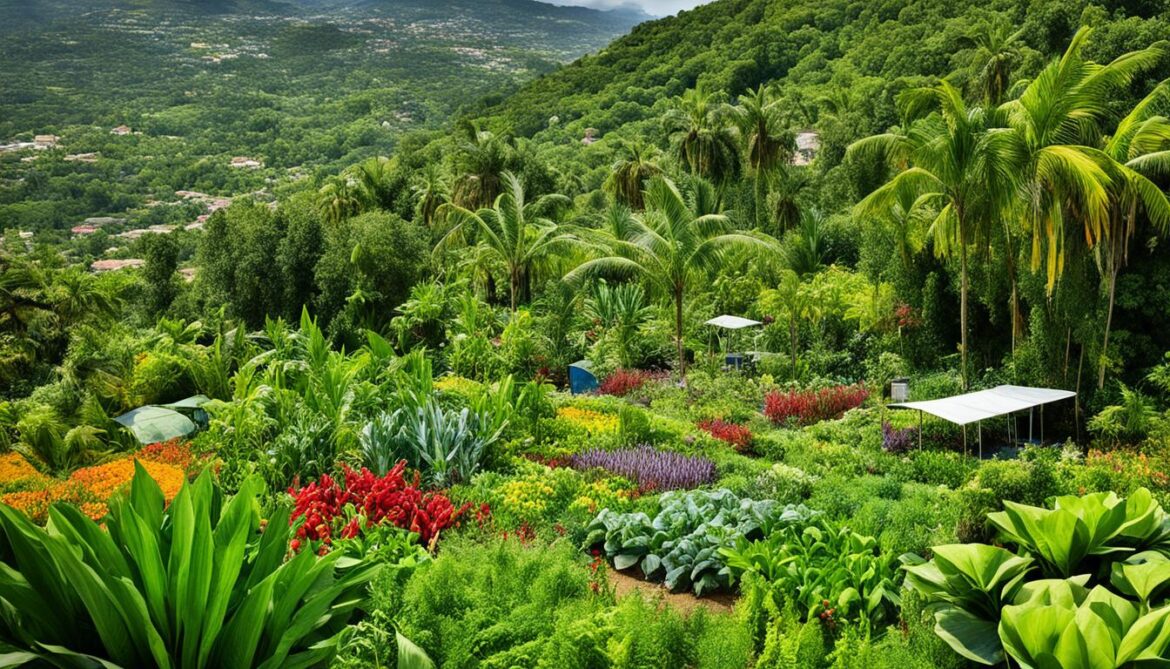
Conclusion
The conservation of sacred natural sites and biodiversity in Haiti plays a crucial role in protecting the environment and preserving the country’s rich cultural heritage. Initiatives like the Foundation for the Protection of Marine Biodiversity (FoProBiM) have shown the effectiveness of integrating traditional knowledge with scientific approaches to achieve sustainable development.
By actively involving indigenous communities and promoting sustainable practices, Haiti can successfully conserve biodiversity while supporting the well-being of its people. Through the lessons learned from indigenous peoples worldwide, we can implement effective conservation strategies in other regions, ensuring the preservation of sacred natural sites and biodiversity for future generations.
It is essential to recognize the value of Haiti’s sacred natural sites and biodiversity and to continue working towards their protection. By doing so, we not only safeguard the natural world but also honor the cultural heritage and traditional practices that have been passed down through generations. Together, we can create a sustainable future where biodiversity thrives, and sacred natural sites remain a cherished treasure.
FAQ
What are the main threats to the natural sites and biodiversity in Haiti?
What is the Foundation for the Protection of Marine Biodiversity?
How does FoProBiM involve communities in their conservation efforts?
What is the role of indigenous communities in biodiversity conservation in Haiti?
Why are sacred natural sites important for biodiversity conservation?
What challenges do conservation efforts face in Haiti?
What lessons can we learn from indigenous peoples in terms of biodiversity conservation?
How do indigenous communities protect biodiversity in challenging environments?
What is the importance of agrobiodiversity in traditional agriculture?
What is the significance of conserving sacred natural sites and biodiversity in Haiti?
Source Links
- https://www.beautifulnews.com/build-haitis-resilience-against-natural-disasters-biologist-restoring-its-coastlines
- https://www.dadychery.org/2012/03/10/lessons-from-the-indigenous-on-promoting-plant-biodiversity/
- https://www.researchgate.net/publication/314019782_From_Knowledge_to_Action_How_to_Protect_Sacred_Sites_of_Indigenous_Peoples_in_the_North




